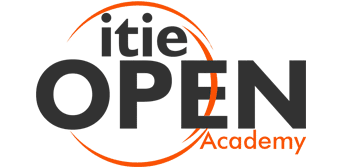Digital Signal Processing deals with algorithms for handling large chunk of data. This branch identified itself as a separate subject in 70s when engineers thought about processing the signals arising from nature in the discrete form. Development of Sampling Theory followed and the design of Analog-to-Digital converters gave an impetus in this direction. The contemporary applications of digital signal processing was mainly in speech followed by Communication, Seismology, Biomedical etc. Later on the field of Image processing emerged as another important area in signal processing.
The following broadly defines different processor classes
- General Purpose – high performance
- Pentiums, Alpha’s, SPARC
- Used for general purpose software
- Heavy weight OS – UNIX, NT
- Workstations, PC’s
- Embedded processors and processor cores
- ARM, 486SX, Hitachi SH7000, NEC V800
- Single program
- Lightweight, real-time OS
- DSP support
- Cellular phones, consumer electronics (e. g. CD players)
- Microcontrollers
- Extremely cost sensitive
- Small word size – 8 bit common
- Highest volume processors by far
- Automobiles, toasters, thermostats
A Digital Signal Processor is required to do the following Digital Signal Processing tasks in real time.
- Signal Modeling
- Difference Equation
- Convolution
- Transfer Function
- Frequency Response
- Signal Processing
- Data Manipulation
- Algorithms
- Filtering
- Estimation
What is Digital Signal Processing?
Application of mathematical operations to digitally represented signals Signals represented digitally as sequences of samples Digital signals obtained from physical signals via transducers (e.g., microphones) and analog-to- digital converters (ADC) Digital signals converted back to physical signals via digital-to-analog converters (DAC) Digital Signal Processor (DSP): electronic system that processes digital signals.
Capabilities of Control Systems
- Hardware In Loop (HIL)- This is a case where your control system is fully installed into the final control system and can only interact with the plant through the proper IO of the controller. The plant is running on a real-time computer with IO simulations to fool the controller into believing that it is installed on the real plant. In this case, the only difference between the final application and the HIL environment is the fidelity of the plant model and the test vectors that you are using. HIL is often used only for software validation rather than development as the design iteration is very slow at this point. However, this test is closest to the final application and therefore exposes most of the problems that will be seen.
- Model In Loop (MIL)- This is a case where you are using a model of the control to work with a model of the plant. The model of the control is probably in SImulink and is connected directly to a physical model of the system within the same Simulink diagram. Extremely fast development occurs at this stage as you can make small changes to the control model and immediately test the system.
- Software In Loop (SIL)- This is a case where the control model is slightly more “real” in the sense that you are no longer executing the model but rather you have probably coded the model into C or C++ and then inserted this coded model back into your overall plan simulation. This is essentially a test of your coding system (whether autocoded or human coded). Design iteration slows down slightly from MIL but coding failures start to become evident.
- Control System Design and Analysis
- Rapid Prototype Development
- Stateflow and Simulink Modelling
- Troubleshoot , profile, debug
- Transition state based design
- From a physical system developing a mathematical model

